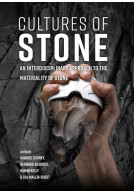Google Books previews are unavailable because you have chosen to turn off third party cookies for enhanced content. Visit our cookies page to review your cookie settings.
Death at the Dunnu (Hardback)
Investigating Funerary Variety at Middle Assyrian Tell Sabi Abyad, Syria
Imprint: Sidestone Press
Pages: 200
Illustrations: 97fc / 57bw
ISBN: 9789464261837
Published: 7th September 2023
Script Academic
Pages: 200
Illustrations: 97fc / 57bw
ISBN: 9789464261837
Published: 7th September 2023
Script Academic
Please note this book may be printed for your order so despatch times may be slightly longer than usual.
You'll be £95.00 closer to your next £10.00 credit when you purchase Death at the Dunnu. What's this?
+£4.99 UK Delivery or free UK delivery if order is over £40
(click here for international delivery rates)
Need a currency converter? Check XE.com for live rates
(click here for international delivery rates)
Need a currency converter? Check XE.com for live rates
During the roughly hundred years (ca. 1225 – 1125 BCE) that the Middle Assyrian dunnu at Tell Sabi Abyad was in operation, some forty-nine individuals were interred in graves of a striking diversity. In this book their burial type, location, orientation, position, grave goods and osteological data are analysed in order to generate new insights on Middle Assyrian society. Most graves appear to have been inhumation graves dug into abandoned spaces in and around the settlement. Men, women, and children were placed in mudbrick-lined cists, unlined pits, pre-existing architecture, and jars. Burial practices similar to those at Tell Sabi Abyad are found at many other Middle Assyrian sites, and suggest they were part of an overarching Middle Assyrian funerary repertoire. At the same time, Tell Sabi Abyad also contained cremation graves – a burial practice that is at odds with Mesopotamian views of the afterlife. These may belong to (Hurrian) deportees that chose to adhere to the funerary traditions of their homelands. The cremated remains were deposited in jars that were subsequently buried in the ground or buried at the place of the funeral pyre. While almost all graves contained some form of grave goods – usually consisting of items of bodily adornment and ceramic bowls placed close to the head and hands – the two graves with the most grave goods were both cremation graves. Their inventories contained sumptuous items of Middle Assyrian style and iconography, suggesting people of non-Assyrian backgrounds were just as capable of socio-economic success in Assyrian society.
Other titles in Sidestone Press...















